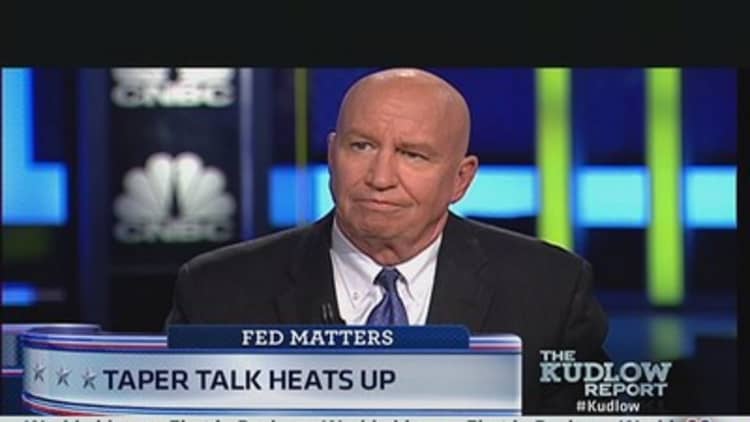Conventional wisdom usually dies hard, but one long-held axiom relating to unemployment may be ready for the graveyard.
For years, economists have accepted 150,000 as the benchmark number of new jobs needed every month to keep the jobless rate level. Anything above that was supposed to lower the rate, while anything below added to the closely followed headline number.
Not so anymore, according to the Chicago branch of the Federal Reserve.
Central bank researchers, in fact, say that because of various factors that number now will be closer to 80,000.
(Read More: Housing Grows, Hiring Slow, Sequester Hits: Fed)
Moreover, a paper the Fed recently released on the issue maintains that the number will continue to fall, and at a fairly rapid pace, all the way down to 35,000 by 2016.
"The projected slowdown is based on 1) a continuing decline in trend labor force participation attributable to the aging of the baby boomer generation and 2) a lower level of projected population growth going forward," Daniel Aaronson, vice president and director of microeconomic research, and Scott Brave, senior business economist, said in the research paper.
"The Census Bureau projects a significant slowdown in population growth from the 1 percent-1.25 percent rate that prevailed for the two decades prior to the most recent recession," they added.

If correct, the conclusion has important implications for those trying to gauge the nation's economic health—and in particular the highly influential central bank.
(Read More: For Some, Fed Can Start Tapering NOW)
The Fed has pegged a 6.5 percent unemployment rate as critical to when it will begin normalizing its target funds rate from its current status near zero.
The rate also will play a role in determining when the Fed will curtail the third phase of its quantitative easing program, in which it is buying $85 billion a month in Treasurys and mortgage-backed securities.
A scaling back of QE3 has been met with trepidation from the financial markets, with talk of a "taper" triggering stock market volatility and a rise in interest rates.
The Aaronson and Brave projections are based on the complicated formula the Labor Department uses to calculate the unemployment rate, and factors in what it considers to be "trend unemployment" over the course of time.
(Read More: The New American Dream: Part-Time Job, Apartment)
They estimated that 2012 saw trend growth miss by 6 million, or 4 percent, and would require growth of 195,000 jobs per month to close the gap by 2016.
"Employment growth has been well short of trend since 2008, opening up a large gap between trend and actual payroll employment," they said. "We expect this gap to slowly narrow as a result of above-trend growth in economic activity over the next few years."
Reviewing the research, Goldman Sachs said that if it is correct that would mean the Fed would hit its 6.5 percent target by mid-to-late 2014 if the economy averages 200,000 jobs per month.
The Labor Department estimated that May saw 175,000 gains in May, with the jobless rate rising to 7.6 percent.
(Read More: No Swoon: Job Creation Continues, Rate Up to 7.6%)
However, Jan Hatzius, Goldman's senior economist, takes issue with the Chicago Fed's findings, charging that they rely on assumptions about a declining participation rate that may not materialize.
Hatzius believes the actual job creation needed to lower the unemployment rate is "significantly higher" than the 80,000 Fed estimate.
Assuming that the participation rate stays even, that would require 130,000-140,000 jobs a month, he said.
"This is not a technical detail," Hatzius said in a note. "If the actual participation rate is currently below trend but is likely to converge to trend over time, the pace of job growth will need to be materially above 80,000 per month to keep the unemployment rate stable, at least over the next few years."
—By CNBC's Jeff Cox. Follow him @JeffCoxCNBCcom on Twitter.


